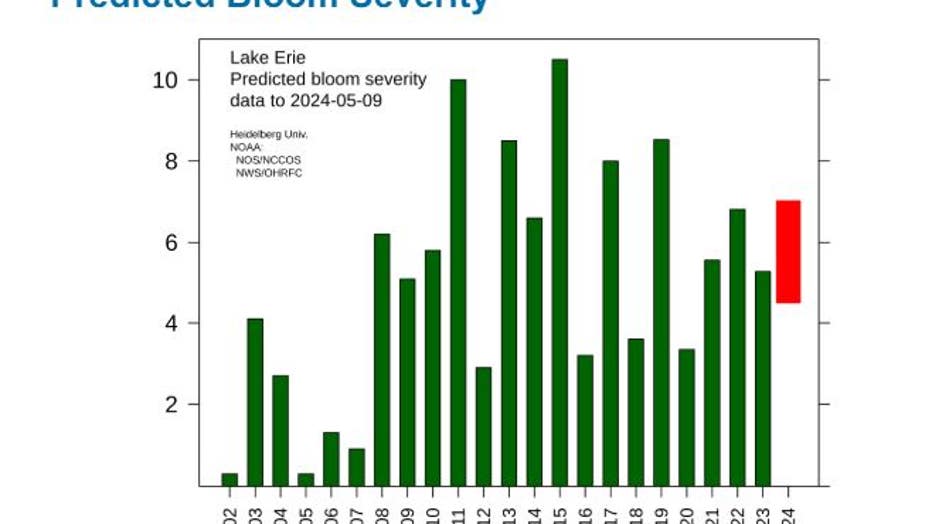Lake Erie algal bloom could be worst in years, latest forecasts say
(FOX 2) - Lake Erie could see the worst algal bloom in five years with forecasts pointing toward a moderate to larger than moderate invasion of phosphorus loading into the body of water.
If above-average rainfall continues through the rest of May and June, the severity could be even worse and reach levels last seen in 2017.
The blooms create large swaths of algae that can worsen water quality, affecting drinking water and the health of fish that live in the local habitat. The blooms can be severe enough that even satellite imagery can see them.
The National Oceanic and Atmospheric Administration projected this year's harmful algal bloom in western Lake Erie to fall between 4.5 and 7.5 on the severity scale. The bloom in 2023 reached a 5 on the 10-point scale.
The worst year was in 2015, when the bloom exceeded the 10-point scale.

Algal Bloom severity scale over the past 22 years. This year, NOAA is predicting a bloom between 4.5 and 7.5. (Data via National Centers for Coastal Ocean Science projection.)
Many variables play into the size of a bloom, with the abundance of phosphorus running into the tributaries that feed Lake Erie being a primary factor. NOAA estimates the runoff by looking at spring and summer rainfall totals.
The biggest source of nutrients that enable the blooms is the Maumee River, where phosphorus and nitrogen used on nearby farms runs off into the river. The more rain that falls in the spring, the more runoff leads into Lake Erie.


